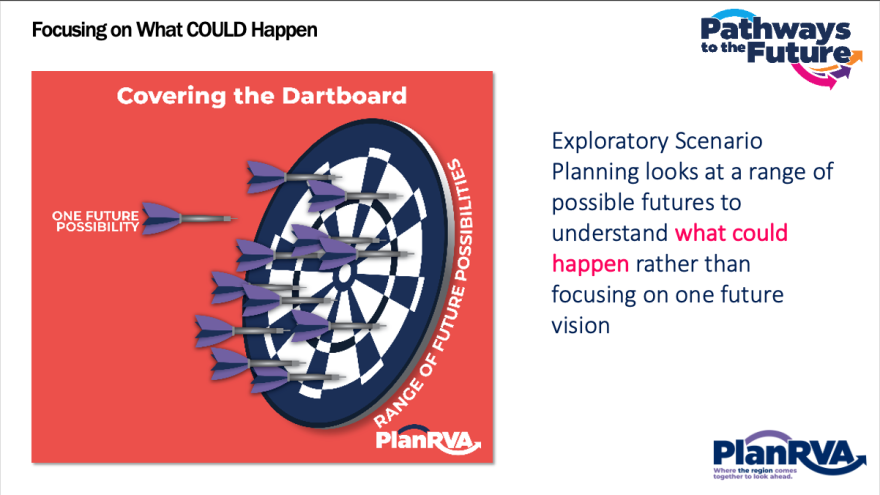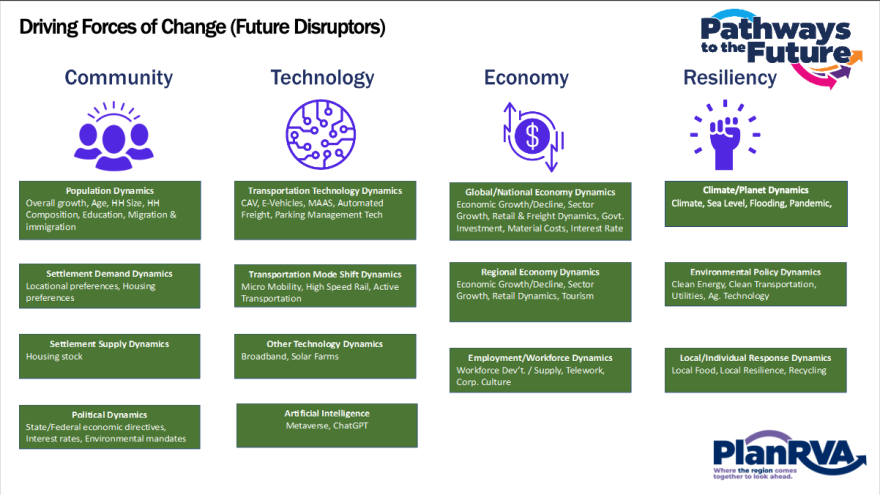Many localities have a comprehensive plan that officials use to guide future development.
The Richmond Regional Transportation Planning Organization is working on a similar concept known as scenario planning — but its main purpose is to plan for the unexpected.
At its monthly meeting last week, Chet Parsons, PlanRVA’s transportation director, said that it’s difficult to predict what’s going to happen in 10 to 20 years.
“What if we have an additional high-speed rail corridor that is popped in our lap and the development patterns change because of that high-speed rail?” Parsons said. “What if Amazon builds their new headquarters in Richmond, all those things could be very impactful in the future.”
Parson told RRTPO the overall purpose of this project is to be prepared for those hard-to-foresee events.
“The focus area for this is to look at the things that are going to probably cause the most volatility in the future, the most uncertain and the highest impact,” he said. “Because otherwise, you're looking at a range of things that that may not move the needle very much”
Those volatilities could include drastic changes in the economy, like another pandemic or a war, or climate issues such as localized flooding or changes in clean energy — all of which would impact transportation.

“To add another metaphor to the process, think about it like a dartboard,” Parsons said. “In a traditional planning process, you're throwing one dart, and that's your future possibility. But what if, what if there are five darts? What if there are 10 darts? This process looks at a range of possible features so that we can understand what can happen rather than just focusing on one thing?”
Parsons said his team is developing 11 different models to predict what those possible changes could mean for the region’s transportation.
“We would then develop a series of models that aren't currently in place that can help us to get an understanding, of well, if X happened in the future, run these conditions through the model. This is what would be the result,” Parsons said. “If Y happens in the future, do the same kind of thing. So that we can test all of these different future conditions, and then be better informed.”

Some of the models they’ve developed so far include being able to adjust how the region can respond if more land is used for housing or retail; if highway volumes increase in terms of vehicle miles traveled or if there’s congested speed; and how to compensate if mobile emissions from vehicles get too high.
In Parsons’ slideshow to the board, he wrote “The Richmond region historically had issues meeting the ozone standard.” He said the tools will also help localities and private organizations be more informed and better prepared.
“Once this is complete, then we'll be able to turn our focus to how best to serve the community with the tools that's been developed,” Parsons said.
Adoption of the scenario plan could happen sometime in 2024.



